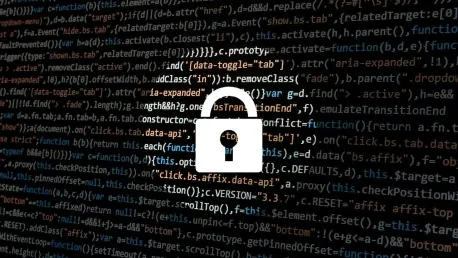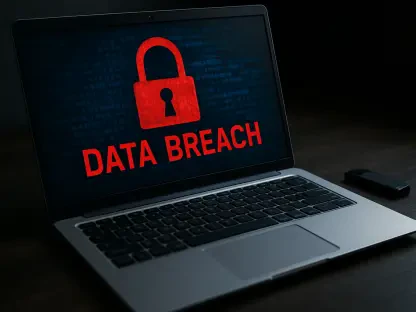In today’s data-driven world, the need for secure and scalable storage solutions is more pressing than ever. According to a 2024 report by IBM, the average cost of a data breach has reached an all-time high of $4.88 million per incident, underscoring the financial and reputational damage that can ensue. As companies strive to protect their sensitive information, decentralized storage has emerged as a viable alternative, offering several advantages over traditional centralized storage systems. This article explores the steps businesses can take to bolster their data security through decentralized storage solutions, from evaluating risks to partnering with technology providers.
1. Evaluate Risks
Before migrating to decentralized storage, the first crucial step is to identify the weak points in your current data storage system. By thoroughly evaluating these vulnerabilities, you can better understand the areas in need of fortification. This assessment should include a comprehensive review of your data management practices, specifically focusing on the strength of your encryption methods, redundancy techniques, and the scalability of your existing infrastructure. It’s essential to ask questions like: Are your encryption methods strong enough to fend off sophisticated cyber attacks? Are you employing effective redundancy techniques to ensure data availability in case of system failure? Is your current infrastructure scalable enough to handle increasing data loads?
In addition to these questions, businesses must scrutinize their data access protocols. Who has access to sensitive information, and are there sufficient barriers to prevent unauthorized entry? Regular audits and updated security practices can help in identifying and patching vulnerabilities. This methodical evaluation of risks provides a solid foundation for implementing decentralized storage solutions. Organizations must ensure that every aspect of their data management protocol aligns with industry standards and regulatory requirements. By rigorously assessing these factors, businesses can lay the groundwork for a more secure, efficient, and scalable data storage system.
2. Begin Gradually
Once the risks have been evaluated, the next step is to test decentralized storage with a hybrid approach. This means slowly transitioning data while carefully tracking performance metrics to ensure system reliability and security. Consider starting with a subset of non-essential data to minimize risks during the initial phase. By doing this, organizations can gauge how well the decentralized system integrates with their existing infrastructure and uncover any potential issues that need to be addressed.
It’s also vital to maintain high-priority data within centralized storage initially, moving less critical information to decentralized nodes. This cautious approach allows you to gradually build confidence in the new system without exposing sensitive data to undue risks. During this transition, it’s crucial to implement robust encryption and access control mechanisms to ensure compliance with regulatory standards and streamline operational processes. By doing so, businesses can create a secure, well-managed hybrid storage environment that leverages the strengths of both centralized and decentralized systems.
Through ongoing monitoring and performance tracking, companies can fine-tune their decentralized storage solutions to meet their specific needs. This gradual, hybrid approach minimizes disruptions and allows for easier identification of issues before they escalate, paving the way for a smoother full-scale implementation in the future.
3. Partner with Providers
Collaborating with decentralized storage providers is essential for a seamless integration of their technology into your existing systems. Start by working closely with these providers to understand the specifics of their solutions, focusing on scalability, adaptability, and security measures. Engaging in transparent discussions about your requirements and any potential concerns can lead to customized solutions tailored to your needs.
Begin the transition by moving less critical data to the decentralized storage system. This approach allows you to test the waters, ensuring the technology meets your expectations without risking vital information. As you gain confidence in the system’s performance, you can progressively transition more critical data. This step-by-step method helps minimize disruptions and ensures a more controlled migration process. Effective communication and collaboration with your providers can also lead to additional insights and improvements, further enhancing your overall data security strategy.
When integrating decentralized storage, it’s crucial to continuously evaluate the system’s performance and address any security concerns that may arise. By maintaining an ongoing dialogue with your providers, you can adapt to new challenges and incorporate improvements as needed. This partnership can be instrumental in achieving a secure, efficient, and scalable storage solution tailored to your organization’s unique requirements.
4. Achieving Data Security and Compliance
Once a company has implemented decentralized storage, the focus should shift to achieving robust data security and regulatory compliance. Decentralized storage facilitates stringent security measures by encrypting and fragmenting data, making it nearly impossible for unauthorized users to piece together meaningful information. This segmentation ensures that even if a cybercriminal gains access to one part of the data, they cannot reconstruct the complete dataset. Furthermore, decentralized storage can offer immutable data records, which cannot be altered or deleted once stored, adding an extra layer of security and compliance.
Achieving compliance with laws such as the General Data Protection Regulation (GDPR) and the California Consumer Privacy Act (CCPA) is crucial. These regulations require stringent measures to protect sensitive customer data, including location-based data management. Organizations must routinely audit their data storage systems to ensure compliance, adopting principles such as data minimization, strong encryption, access control, and regular data backups. By doing so, they can efficiently mitigate risks and enhance operational efficiency in handling sensitive data.
Continuous monitoring and regular updates of security measures are necessary to stay ahead of evolving cyber threats. As regulations change, organizations must adapt their data management practices accordingly to maintain compliance. By prioritizing data security and compliance, businesses can safeguard their reputation and protect their customers’ trust, ensuring the long-term success of their data storage strategies.
5. Consider Cost Efficiency
While security and compliance are top priorities, cost efficiency cannot be overlooked when transitioning to decentralized storage. One of the significant benefits of decentralized storage is the potential for cost savings. By allowing organizations to rent unused storage space from individual users, decentralized storage solutions can be up to 78.6% more cost-effective than traditional cloud providers. However, to truly realize these savings, businesses must evaluate the total cost of ownership (TCO) for different storage solutions.
Key strategies for assessing TCO include examining initial infrastructure costs, ongoing operational expenses such as maintenance and energy, and costs associated with data retrieval and scalability. By monitoring metrics such as cost per terabyte, energy consumption, and system uptime versus downtime, organizations can gain a comprehensive understanding of the financial impact of their storage choices.
Implementing efficient data management practices, such as data tiering, can further reduce costs. Data tiering involves storing frequently accessed data in high-performance, centralized systems, while less critical data is moved to decentralized options. Techniques like data deduplication and compression also help minimize storage needs, leading to lower costs and more efficient resource allocation. By optimizing these practices, companies can enhance both cost savings and operational effectiveness, ensuring a sustainable and economical data storage strategy.
Conclusion
In today’s data-centric era, the demand for secure and scalable storage solutions has never been more critical. A 2024 report by IBM highlights that the average cost of a data breach now stands at a staggering $4.88 million per incident. This alarming figure reflects the severe financial and reputational repercussions businesses face due to data breaches. As organizations seek to safeguard their sensitive information, decentralized storage is emerging as a compelling alternative to traditional centralized systems. Decentralized storage not only offers enhanced security but also provides scalability, making it an attractive option for businesses of all sizes.
To improve data security through decentralized storage, companies can take several steps. First, conducting a thorough risk assessment is essential to understand potential vulnerabilities. Identifying these risks helps in forming a strong security backbone. Next, partnering with reputable technology providers who specialize in decentralized storage can offer tailored solutions that meet specific business needs. Additionally, educating employees about the importance of data security and how decentralized storage works can further fortify an organization’s defense mechanisms. This holistic approach ensures that sensitive data remains protected against breaches, ultimately preserving both financial stability and corporate reputation.









